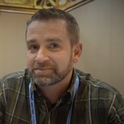
Article
Linking models across scales to assess the viability and restoration potential of a threatened population of steelhead (Oncorhynchus mykiss) in the Middle Fork John Day River, Oregon, USA Title
Ecological Modelling
(2017)
Abstract
Species conservation is often informed by the use of models evaluating the effect of different management strategies on the status of at-risk populations. For Pacific salmon and steelhead (Oncorhynchus sp.), which have complex life cycles spanning diverse environments and jurisdictions, life-cycle models (LCMs) have proven particularly useful for this task. Yet, most salmonid LCM applications to date have not been able to tie projections of population performance to specific tributary habitat management actions, which is integral to many recovery plans. Here we describe a modelling framework that links reach-scale stream habitat models with a basin-scale LCM, bridged by statistical extrapolation models, to evaluate recovery opportunities for an imperiled population of steelhead (O. mykiss) in the Middle Fork John Day River, USA. We parameterized a LCM by leveraging results from (1) a large-scale environmental monitoring program that supports ecohydraulic modelling and characterizes habitat quality (with a salmonid emphasis) within individual stream reaches (ca. 100–600 m segments), and (2) detailed demographic studies that provide estimates of survival, age structure, fecundity, etc. relevant to the model population. We then applied the model to quantify population performance under current/base (status quo) conditions and under two classes of restoration that aim to increase survival for juvenile steelhead: riparian revegetation, which reduces (otherwise limiting) stream temperatures during the warm summer months; and woody structure addition, which increases in-stream hydraulic complexity and thus juvenile rearing capacity. Status quo simulations produced abundance dynamics consistent with recent population monitoring data and the population’s current threatened status. Our evaluation of these basic restoration scenarios revealed that while both strategies have the potential to improve the conservation status of steelhead, the benefits of woody structure addition were relatively minor compared to those resulting from stream temperature reductions.
Keywords
- salmon habitat,
- life cycle models,
- stream restoration,
- ecohydraulics
Disciplines
Publication Date
2017
DOI
https://doi.org/10.1016/j.ecolmodel.2017.03.022
Citation Information
McHugh, P.A. et al. 2017. Linking models across scales to assess the viability and restoration potential of a threatened population of steelhead (Oncorhynchus mykiss) in the Middle Fork John Day River, Oregon, USA. Ecological Modelling 355:24-38. https://doi.org/10.1016/j.ecolmodel.2017.03.022
